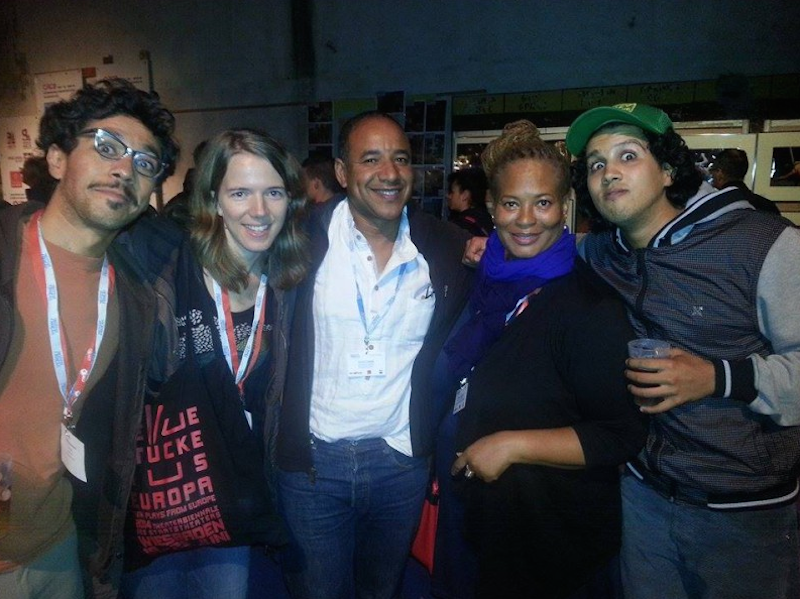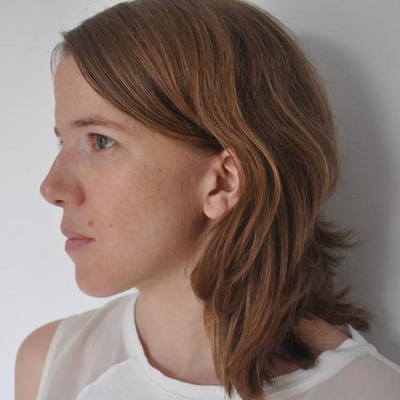Now or Never: Circus Focus

At the 2014 Circa Festival, in Auch, France, the French Institute for Programmers and Cultural Agents brought together 80 people from all over the world for Circus Focus, a meeting designed to introduce professionals to some new French productions. María Folguera shares her experience at the conference.
“Before jumping on the teeterboard I’d like somebody to hug me, as if I were leaving for war,” says Amanda Lund to the expectant audience under the circus tent. The first volunteer comes out and hugs her. Two more people, and then two more, form a collective hug. We all applaud, touched by the delicate moment in the middle of an apparently messy show, made of fanfare and an undeniable sense of party. It’s Maintenant ou jamais (Now or Never) by Cirque Tsuica company. We’re in Circa Festival, Auch, France, a must for anyone looking forward to finding new French circus projects. “Now or Never” is also the slogan of the 2014 edition of this meeting for premieres, circus schools exhibitions, and professionals from all over the world. The local people from Auch share the excitement: hundreds of volunteers get involved, audiences of all ages attend the shows, and the shops in town decorate their windows with circus motifs.

The festival takes place in tents across different spots, but its center is CIRC, the Center for Circus Innovation and Research, which hosts artistic residencies for companies, offices, and an adaptable tent, designed under an ecological and sustainable spirit. The festival itself is conceived under this premise. In fact, the path that connects the different festival spots runs by the riverbank, so that you can get everywhere by walking.
But let’s go back to the collective hug inspired by the Cirque Tsuica members, the merry orchestra on bike wheels. When we leave their tent, we run to our next destiny. This is the fourth of five intense days: 80 of us are in the middle of Circus Focus, a meeting organized by the French Institute for Programmers and Cultural Agents. By the time the fifth day ends, we will have attended 16 shows, a two-hour presentation of 12 upcoming productions that will be produced in 2015, and two meetings with people from Circostrada and Jeune Talents du Cirque. But we will also have jumped on and off the bus, queued in front of the tents, and eaten our sandwiches five minutes before some shows (especially the Spanish members, as we’re not very used to the rest of the world’s eating schedules!).

It’s during these times that we introduce ourselves and get to know each other: “Hi, I come from New York … from Bogotá … from Singapore … from Sicily …” We discover that we share a lot in spite of the distance. As many of us working in artistic departments, we often face the same obstacles, the strong belief many people have that “circus” is a synonym for family audiences, for example. We share the same challenges, such as the need for better communication among professionals. It may seem paradoxical, but in Circus Focus, thanks to our French hosts, many of us met for the first time, even though some of us came from areas that are geographically close, as in the case of the Spanish, Italian, and Moroccan guests.
Watching 16 shows in five days is exhausting, but of course it’s worthwhile to see different formats, aesthetics, tendencies, and shows from artists ranging from the students of the Lido Circus School in Toulouse to mature companies such as Akoreacro, XY, or MPTA. This last company brought its show Ali, a work that has been touring since 2008, and they have added a new piece to it: Nous sommes pareils à ces crapauds qui dans l’austère nuit des marais s’appellent et ne se voient pas, ployant à leur cri d’amour tout la fatalité de l’univers (We are like the toads that in the stark nights of the marshes call for each other and can’t see each other, crying in their scream of love all the misfortune in the universe). Mathurin Bolze and Hedi Thabet, together with Ali Thabet, create a powerful dance. The new piece also brings the not-less-than powerful presence of the dancer Artémis Stavridis, dressed as a bride, and a quartet of Greek and Tunisian musicians. The exceptional physical strength and precision of the performers leave images to remember. The new show by XY, Il n’est pas encore minuit (It’s not midnight yet), doubles the technical bet, and anyone who has seen their former show, Le grand C, knows what level of excellence they can reach. If Le grand C had a light, soft spirit, Il n’est pas encore minuit has a more aggressive nature. The show starts with a fight, but the 22 performers have enough time to explore other possible relationships, through, for example, another collective hug and a euphoric lindy hop dance.

One of the consequences of viewing a lot of shows from a determined geographical area is the possibility of detecting tendencies that are repeated here and there. For example, this year we have found a repeating leitmotif: two men face each other. Two performers play with the tension, taking to the limit the archetype of masculine firmness. Each face-to-face could end up with a kiss, with a fight—who knows? Fortunately, this is art, and we don’t need quick resolutions. But it’s remarkable that so many different shows have included a scene like this:Bataille (Dernier minute), Hallali (Les Philebulistes), Ali(MPTA), Nos limites (Radhouane El Meddeb, Matias Pilet, Alexandre Fournier) and Il n’est pas encore minuit ( XY). I would dare to say that this has something to do with growing homophobia in France. The journal Le Mondeannounced that homophobic acts had increased 78 percent from 2012 to 2013, an unexpected reaction to the legalization of gay marriage and adoption. The sadly well-known Manif pour tous (“Protest for everyone”) brought together hundreds of thousands of people against gay marriage on May 26, 2013 in Paris. (Le Monde, May 13, 2014, Les actes homophobes ont bondi de 78 % en France). Art, including circus, is the place to challenge the conflicts and fears of a society, and this could be a good example.
Featured Image: The author (second from left) and other Circus Focus participants
Editor's Note: At StageLync, an international platform for the performing arts, we celebrate the diversity of our writers' backgrounds. We recognize and support their choice to use either American or British English in their articles, respecting their individual preferences and origins. This policy allows us to embrace a wide range of linguistic expressions, enriching our content and reflecting the global nature of our community.
🎧 Join us on the StageLync Podcast for inspiring stories from the world of performing arts! Tune in to hear from the creative minds who bring magic to life, both onstage and behind the scenes. 🎙️ 👉 Listen now!
